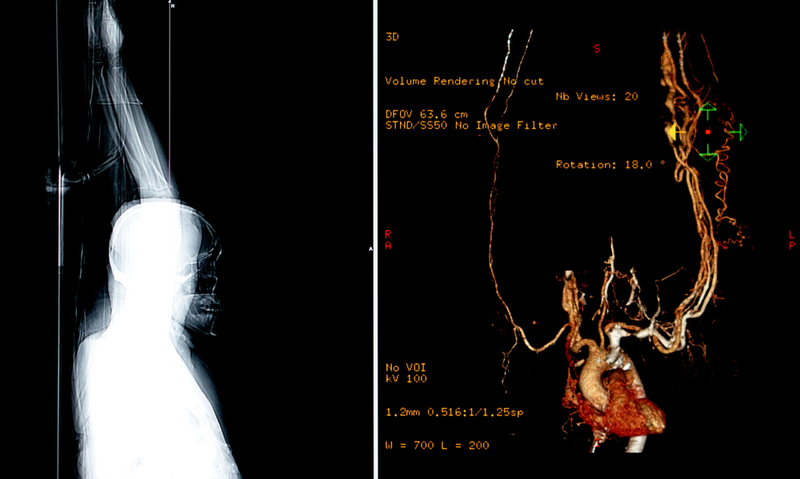New non-invasive test helps avoid unnecessary heart procedures: ESC 2018
ESC 2018 Press Release Aug 28, 2018
Unnecessary heart procedures can be avoided with a non-invasive test, according to late breaking research presented at ESC Congress 2018 and published in Journal of the American College of Cardiology.

Dr Bjarne Linde Norgaard, principal investigator, of Aarhus University Hospital, Denmark, said: “This study showed that a non-invasive method can be used to identify which patients with chest pain and clogged coronary arteries (coronary artery disease) can be safely treated with drugs and do not require invasive diagnostic tests.”
Chest pain is a warning sign of coronary artery disease which can cause a heart attack or death if the blockage stops blood flow to the heart. The severity of the blockage and its impact on blood flow determines whether treatment should be drugs, inserting a stent to open the artery, or surgery to replace the artery.
Patients with chest pain are initially assessed with coronary computed tomography angiography (CTA), a non-invasive scan that determines the degree of artery narrowing (stenosis), which is expressed as a percentage. An invasive technique called fractional flow reserve (FFR) then assesses whether the stenosis is obstructing blood flow (called ischaemia). FFR involves inserting a pressure wire into the artery then calculating the ratio between the maximum blood flow in the narrowed artery and the maximum blood flow in a normal artery.
A new non-invasive technique for assessing ischaemia uses anatomic information from standard coronary CTA scans and applies a mathematical algorithm simulating blood flow to calculate FFR. Several clinical trials have shown that this method, called FFRCT, accurately reflects invasively measured FFR. However, there is little information on clinical outcomes using coronary CTA followed by FFRCT to decide treatment.
This is the first study to show the clinical benefit of FFRCT in patients with moderate stenosis. The study included 3,674 patients with stable angina who had new onset chest pain between 2014 and 2016. All patients had coronary CTA to determine the degree of stenosis. A total of 2,540 patients had mild stenosis (less than 30%) and had no additional testing.
A total of 677 patients with moderate stenosis (30–70%) had FFRCT to guide further management. Of those, 410 (61%) patients had normal FFRCT (more than 0.80) and were treated with drugs alone, with no referral to invasive testing (coronary angiography).
Over the next three years, the incidence of a combined endpoint of all-cause death, myocardial infarction, hospitalisation for unstable angina, and unplanned revascularisation was similar in patients with mild stenosis on coronary CTA (2.8%) and patients with moderate stenosis on coronary CTA but normal FFRCT (3.9%).
“Patients with moderate stenosis on coronary CTA who had normal FFRCT were deemed at low risk of heart attack and received drugs alone,” said Dr Norgaard. “Our study shows that this is a safe strategy, since their prognosis was equally favourable to patients with no or mild stenosis who we know have good outcomes. The findings suggest that coronary CTA followed by FFRCT could be used as a gatekeeper to invasive diagnostic testing, and that patients with moderate stenosis and a normal FFRCT result do not need the invasive test.”
Patients with abnormal FFRCT (0.80 or less) either received medical therapy alone or were referred for invasive coronary angiography, depending on the number of affected arteries and their location. Dr Norgaard said: “These patients had more severe disease and a less favourable outcome, particularly those who received only medication. More research is needed to determine the best management strategy for these patients.” Data for the study were obtained from the Western Denmark Cardiac Computed Tomography (WDCT) Registry, the Danish National Patient Registry, and the Civil Registration System.
-
Exclusive Write-ups & Webinars by KOLs
-
Daily Quiz by specialty
-
Paid Market Research Surveys
-
Case discussions, News & Journals' summaries